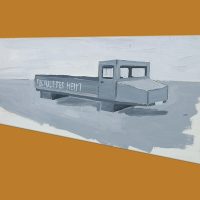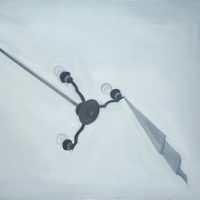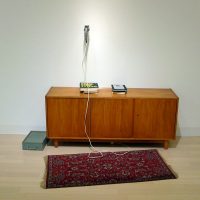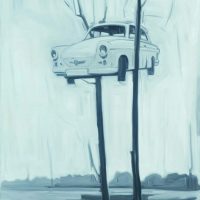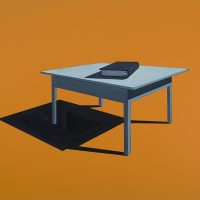Olaj, rétegelt lemez, milton kapocs, farost, 35×40 cm. / Plywood, oil, wood fibre, 40x35cm.
Magántulajdon. / Private collection
Olaj, vászon, 100×130 cm. / Oil on canvas, 100x130cm.
Somlói Zsolt és Spengler Katalin gyűjteménye. / Collection of Zsolt Somlói and Katalin Spengler.
Olaj, vászon, 120x100cm. / Oil on canvas, 120x100cm.
A művész tulajdona. / Property of the artist.
Olaj, vászon, 135×200 cm. / Oil on canvas, 135×200 cm.
A művész tulajdona. / Property of the artist.
As a young painter, the new economic and political climate of the nineties elicited a shift in his art, which did, however, retain its fundamental feature – that is, above all, a continuous dialogue with the surrounding world and with the visible and invisible layers of mass culture. With his precisely articulated motifs – be it a highlighted excerpt, a stumbled-upon classified ad or a visual element – he creates unexpected associations and enigmatic references to history and culture.
Pál Gerber’s retrospective exhibition is the next event of the Ludwig Museum series introducing artists’ oeuvres. Deriving from the material of the legendary Kék Acél (Blue Steel) exhibition held in the year of the regime-change (1989), Ludwig Museum’s show draws an imaginary arc tracing Gerber’s 25-year-long journey as an artist. This is a varied oeuvre in terms of genres as well.
Instead of addressing this diversity through the obvious chronological approach, however, the exhibition uses juxtaposition in its interpretation of the material. Thus it seeks to establish a dialogue both with Gerber’s oeuvre and between the individual works as well. Although the audience may have seen Gerber’s work at a number of exhibitions through the years, such a multifaceted dialogue has not been realised before.
In addition to such new works as the According to Law series (2010), The Truth Sets You Free (2010), and Dust on Modernism (2010), Pál Gerber’s earlier installations will also be featured, including Hope in Skilled Labour (1994), and, exhibited for the first time in Hungary, I Don’t Like Pessimism (1992).
His works commenting on the world, the actors, the trends and the operating mechanisms of art (The Weight of Art – Uplifting Art, 2010; Price Pictures, 2008; Creative Artist Hard at Work at Developing His Own Unique Style of Form, 1991/2010), and his more explicitly political and socially critical pieces (Ochre Flag, 2005; Oil Stain, We Are a Small Country, 1992; Living without Self-Critique, 2006/2010) will also be presented. Gerber usually highlights the banal, unarticulated, lurking repressions and bittersweet truths of the everyday world that surrounds us (Woman’s Handbag with a Broken String of Beads, 2003; Gabi’s Short Story, 2005/2010; Object Caught on the Chandelier, 1998).
